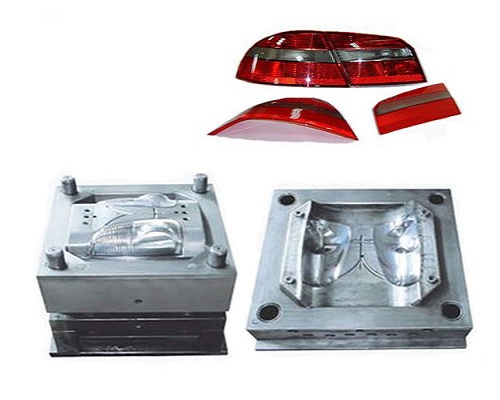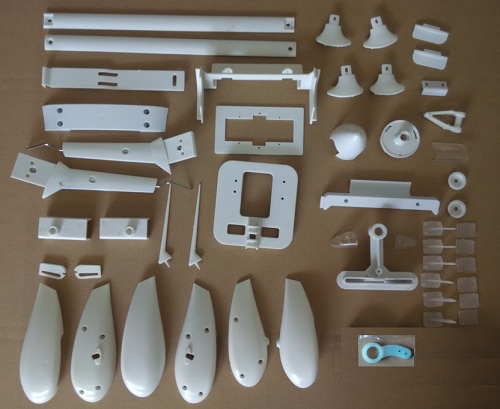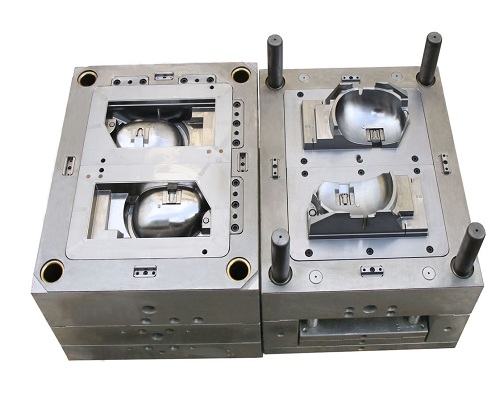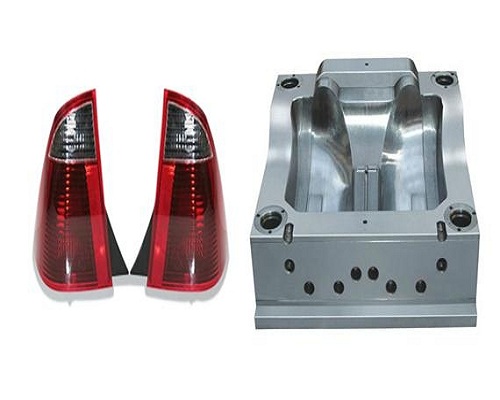Prototyping and Manufacturing Application in Lighting parts Industries
Accelerate Lighting Innovation with Yigu’s Prototyping & Mass Production. Transform your lighting ideas into market-ready products seamlessly with Yigu Technology. We bridge the gap between rapid prototyping and high-volume manufacturing, ensuring speed, precision, and cost-efficiency.
Key Solutions:
- ✅Fast Prototyping: 3D printing and CNC machining for quick design validation.
- ✅Scalable Production: Injection molding and automated assembly for bulk orders.
- ✅Material Expertise: High-performance plastics, metals, and optics tailored for lighting.
- ✅End-to-End Support: From concept to final product, with strict quality control.
Ideal for LED fixtures, smart lighting, and decorative designs—launch faster, produce smarter.
1. Introduction to Rapid Prototyping and Mass Production in Lighting Industry
1.1 Definition of Rapid Prototyping
Rapid prototyping is a group of techniques used to quickly fabricate a scale model of a physical part or assembly using three-dimensional computer-aided design (CAD) data. In the lighting industry, it has become a crucial tool for product development. For example, with technologies like 3D printing, designers can create prototypes of lamp holders, shades, or decorative lighting elements within hours. This allows them to test the design's functionality, such as how light is dispersed or if the part fits with other components, before committing to mass production. The ability to iterate quickly on designs means that new lighting concepts can be brought to market faster, giving companies a competitive edge.
1.2 Overview of Mass Production Manufacturing
Mass production in the lighting industry involves the large-scale manufacturing of lighting parts using standardized processes. Traditionally, this has relied on methods like injection molding for plastic parts or die casting for metal components. These methods are efficient for producing large quantities of identical parts, ensuring consistency and cost-effectiveness. For instance, a single injection mold can produce thousands of plastic light covers with high precision. However, the initial setup costs for molds and machinery are high, and any design changes require new molds, which can be time-consuming and expensive. The integration of rapid prototyping allows manufacturers to refine designs more efficiently before starting mass production, reducing the risk of costly errors and improving overall product quality.
2. Applications of Rapid Prototyping in Lighting Parts
2.1 Design Validation and Testing
Rapid prototyping has revolutionized the way lighting parts are designed and tested. By utilizing 3D printing and other rapid prototyping techniques, manufacturers can create physical models of lighting components such as lamp holders, shades, and diffusers directly from CAD data. This allows designers to validate the functionality and aesthetics of their designs in a matter of hours rather than days or weeks. For example, a prototype of a new LED light fixture can be tested to ensure that the light distribution meets the desired specifications, such as achieving a uniform illumination pattern or a specific beam angle. According to a study by the Lighting Research Center, rapid prototyping can reduce design validation time by up to 60%, enabling companies to bring innovative lighting products to market more quickly.
In addition to functional testing, rapid prototyping also facilitates the evaluation of ergonomic and aesthetic aspects of lighting parts. Designers can create multiple iterations of a prototype to perfect the shape, size, and appearance of a lighting component. This is particularly important in the lighting industry, where the visual appeal of a product can significantly impact its market success. For instance, a decorative chandelier can be prototyped with different crystal patterns or finishes to determine the most visually appealing design. The ability to make these adjustments quickly and inexpensively ensures that the final product meets both functional and aesthetic requirements.
2.2 Customization and Personalization
The lighting industry is increasingly moving towards customization and personalization, driven by consumer demand for unique and tailored lighting solutions. Rapid prototyping plays a key role in enabling this trend. With the ability to create one-off prototypes or small batches of customized parts, manufacturers can offer personalized lighting products that cater to individual customer needs. For example, a customer may request a custom light fixture with a specific shape or color to match their interior decoration. Using rapid prototyping, the manufacturer can quickly produce a prototype that meets these specifications, allowing the customer to approve the design before the final product is manufactured.
This level of customization is not only limited to decorative lighting but also extends to functional lighting solutions. For instance, in the automotive industry, rapid prototyping can be used to create custom headlights or taillights with unique designs or performance characteristics. A study by the Automotive Lighting Association found that 70% of consumers are willing to pay a premium for customized lighting features in their vehicles. Rapid prototyping enables manufacturers to meet this demand by providing a cost-effective and efficient way to produce customized lighting parts.
Moreover, rapid prototyping allows for the integration of advanced materials and technologies into lighting parts. For example, manufacturers can experiment with different types of plastics, metals, or composites to achieve specific properties such as durability, flexibility, or thermal conductivity. This flexibility in material selection further enhances the customization capabilities of rapid prototyping in the lighting industry.
3. Mass Production Techniques for Lighting Parts
3.1 Injection Molding
Injection molding is a widely used mass production technique in the lighting industry, particularly for manufacturing plastic lighting parts. It involves injecting molten plastic material into a mold cavity, where it cools and solidifies to form the desired part. This method is highly efficient for producing large quantities of identical parts with high precision and consistency. For example, plastic light covers, lamp holders, and diffusers can be manufactured using injection molding with tight tolerances and smooth surface finishes.
The key advantages of injection molding include its ability to produce complex geometries and intricate designs, which are common in lighting parts. The use of advanced mold technologies, such as multi-cavity molds, allows manufacturers to produce multiple parts in a single cycle, further increasing production efficiency. According to industry data, a single injection molding machine can produce up to 1,000 parts per hour, depending on the size and complexity of the part.
However, injection molding also has some limitations. The initial setup costs for molds are relatively high, which can be a barrier for small-scale production or frequent design changes. Additionally, the process requires a significant amount of time for mold design and manufacturing, typically ranging from several weeks to months. Despite these challenges, the integration of rapid prototyping can help mitigate these issues by allowing manufacturers to validate and refine designs before committing to expensive mold production.
3.2 Die Casting
Die casting is another essential mass production technique used in the lighting industry, particularly for manufacturing metal lighting parts. It involves forcing molten metal, such as aluminum or zinc, into a reusable metal mold under high pressure. The metal quickly solidifies in the mold, forming the desired part with high dimensional accuracy and surface quality. Die casting is commonly used for producing metal components like light fixtures, brackets, and decorative elements.
One of the main benefits of die casting is its ability to produce parts with thin walls and complex shapes, which are difficult to achieve with other manufacturing methods. This makes it ideal for creating lightweight yet strong lighting parts. For instance, aluminum die-cast light fixtures can be designed with intricate details and thin walls, reducing material usage while maintaining structural integrity. According to market research, die-cast aluminum parts can achieve wall thicknesses as low as 1 mm, while maintaining high strength and durability.
Die casting also offers high production efficiency, with cycle times ranging from a few seconds to a minute, depending on the part size and complexity. This allows manufacturers to produce large quantities of parts quickly and cost-effectively. However, similar to injection molding, die casting has high initial setup costs for molds and requires precise mold design and maintenance. The integration of rapid prototyping can help optimize the design process, reducing the risk of defects and improving overall production quality.
4. Case Studies of Lighting Parts
4.1 Case Study 1: LED Fixture Development
The development of an LED fixture serves as a prime example of how rapid prototyping and mass production techniques are integrated in the lighting industry. A leading lighting manufacturer aimed to develop a new LED downlight fixture that offered improved energy efficiency and better light distribution while maintaining a sleek design. The initial design phase involved creating detailed CAD models of the fixture, including the housing, lens, and heat sink components.
Utilizing rapid prototyping, specifically 3D printing, the manufacturer was able to produce a prototype of the LED fixture within 48 hours. This prototype was used to conduct extensive testing, including light distribution analysis, thermal performance evaluation, and mechanical fit checks. The results showed that the initial design had some issues with heat dissipation and light uniformity. Based on these findings, the design was revised, and a new prototype was created in another 24 hours. This iterative process continued until the final design met all performance specifications.
Once the design was validated, the manufacturer moved to mass production. Injection molding was chosen for the plastic components, such as the housing and lens. The molds were designed based on the final CAD models, and the first batch of parts was produced. The production process was closely monitored to ensure consistency and quality. The LED fixtures were assembled, and final quality checks were performed. The new LED fixture was launched to the market within three months of the initial design phase, thanks to the efficiency of rapid prototyping and mass production techniques.
4.2 Case Study 2: Smart Lighting System
Another notable case study is the development of a smart lighting system, which integrates advanced sensors, connectivity, and control mechanisms into traditional lighting fixtures. A major challenge in this project was to create a prototype that accurately represented the functionality and user experience of the final product. The design team used rapid prototyping to create a functional prototype of the smart lighting system within two weeks. This prototype included a mock-up of the light fixture, embedded sensors, and a basic control interface.
The prototype was tested in a simulated home environment to evaluate its performance in various lighting scenarios, such as dimming, color changing, and motion detection. Feedback from the testing phase highlighted the need for improvements in sensor sensitivity and user interface design. The design was refined, and a second prototype was developed, incorporating these changes. The revised prototype underwent further testing, and the results were satisfactory.
For mass production, the manufacturer opted for a combination of injection molding for the plastic components and die casting for the metal parts. The production process was streamlined to ensure the integration of electronic components and software during assembly. The smart lighting system was successfully launched and received positive reviews from consumers for its ease of use and innovative features. The integration of rapid prototyping allowed the manufacturer to quickly iterate on the design and bring a cutting-edge product to market in a relatively short timeframe.
5. Advantages and Challenges
5.1 Benefits of Rapid Prototyping and Mass Production
The integration of rapid prototyping and mass production techniques in the lighting industry offers numerous benefits that drive innovation and efficiency. One of the primary advantages is the significant reduction in time-to-market for new lighting products. Rapid prototyping allows manufacturers to quickly iterate on designs, addressing functional and aesthetic issues before committing to mass production. This accelerates the product development cycle, enabling companies to respond more swiftly to market demands and trends. For example, a study by the Industrial Design Society found that companies using rapid prototyping can reduce product development time by up to 40% compared to traditional methods.
Another key benefit is cost savings. While the initial investment in rapid prototyping equipment and materials can be substantial, the ability to identify and correct design flaws early in the process reduces the risk of costly errors during mass production. Additionally, the use of advanced manufacturing techniques like injection molding and die casting ensures that once a design is finalized, it can be produced at scale with high precision and consistency, minimizing per-unit costs. According to a report by the Manufacturing Research Institute, the integration of rapid prototyping with mass production can lead to a 35% reduction in overall production costs.
Rapid prototyping also enhances the ability to customize and personalize lighting products. This is particularly important in the lighting industry, where consumers increasingly demand unique and tailored solutions. By leveraging rapid prototyping, manufacturers can create one-off prototypes or small batches of customized parts without incurring prohibitive costs. This not only meets customer needs but also opens up new market opportunities for niche products. A survey by the Consumer Electronics Association revealed that 85% of consumers are more likely to purchase a product if it offers customization options.
Moreover, the combination of rapid prototyping and mass production techniques fosters innovation. Designers are no longer constrained by the limitations of traditional manufacturing methods and can experiment with new ideas and concepts. The ability to quickly create and test prototypes encourages a more iterative and creative design process, leading to the development of more advanced and aesthetically pleasing lighting products. For instance, the use of 3D printing allows for the creation of complex geometries and organic shapes that would be difficult or impossible to achieve with conventional manufacturing techniques.
5.2 Challenges and Solutions
Despite the numerous benefits, the integration of rapid prototyping and mass production in the lighting industry also presents several challenges. One of the main challenges is the high initial investment required for rapid prototyping equipment and materials. This can be a barrier for small and medium-sized enterprises (SMEs) with limited financial resources. However, the increasing availability of affordable 3D printing technologies and the rise of prototyping service providers are helping to mitigate this issue. Many SMEs are now able to access rapid prototyping services on a contract basis, reducing the need for large upfront investments.
Another challenge is the need for specialized skills and expertise in both rapid prototyping and mass production techniques. Designers and engineers must be proficient in CAD software, 3D printing technologies, and traditional manufacturing methods to effectively integrate these processes. To address this, many companies are investing in training programs and collaborating with educational institutions to develop a workforce with the necessary skills. Additionally, the use of software tools that automate certain aspects of the design and prototyping process can help bridge the skills gap.
Ensuring the compatibility and consistency between rapid prototyping and mass production processes is also a significant challenge. Differences in materials, tolerances, and surface finishes can lead to discrepancies between the prototype and the final product. To overcome this, manufacturers are developing standardized protocols and quality control measures to ensure that prototypes accurately represent the final product. This includes using the same or similar materials for prototyping and production, as well as conducting rigorous testing and validation procedures.
Finally, the integration of rapid prototyping and mass production techniques requires effective collaboration between different departments and stakeholders within a company. Designers, engineers, production teams, and marketing departments must work closely together to ensure that the product meets both functional and market requirements. Implementing integrated project management systems and fostering a culture of collaboration can help streamline this process and reduce the likelihood of miscommunication and errors.
In conclusion, while the integration of rapid prototyping and mass production in the lighting industry presents challenges, the benefits far outweigh the drawbacks. By addressing these challenges through investment in technology, training, and collaboration, manufacturers can leverage these techniques to drive innovation, reduce costs, and bring high-quality, customized lighting products to market more quickly.
6. Future Trends in Rapid Prototyping and Mass Production for Lighting
6.1 Technological Advancements
The future of rapid prototyping and mass production in the lighting industry is poised to be transformed by several technological advancements. One of the most significant is the ongoing development of 3D printing technologies. Current 3D printing methods, such as Fused Deposition Modeling (FDM) and Stereolithography (SLA), are already being used for creating prototypes of lighting parts. However, future advancements in 3D printing will likely include higher resolution, faster printing speeds, and the ability to print with a wider range of materials. For instance, researchers are working on developing new materials that can mimic the properties of traditional lighting materials like glass and metal more closely. This will enable manufacturers to create prototypes that are even more representative of the final product, reducing the need for multiple iterations and further speeding up the design validation process.
Another area of technological advancement is the integration of artificial intelligence (AI) and machine learning (ML) into the design and manufacturing processes. AI can be used to optimize the design of lighting parts by analyzing vast amounts of data to identify the most efficient and effective design parameters. For example, AI algorithms can predict the optimal shape and size of a light fixture based on desired light distribution patterns and energy efficiency requirements. This not only speeds up the design process but also ensures that the final product meets high performance standards. In addition, machine learning can be applied to the manufacturing process to monitor and control production quality in real-time. By analyzing data from sensors installed in manufacturing equipment, ML algorithms can detect anomalies and make adjustments to the production process to ensure consistent quality.
Furthermore, advancements in digital twin technology will play a crucial role in the future of lighting manufacturing. A digital twin is a virtual replica of a physical product that can be used to simulate and analyze its performance. By creating digital twins of lighting parts, manufacturers can test different design scenarios and production parameters in a virtual environment before committing to physical prototyping or mass production. This allows for more accurate predictions of product performance and reduces the risk of costly errors. For example, a digital twin of a new LED light fixture can be used to simulate its light output, thermal performance, and mechanical durability under various conditions. Based on the simulation results, designers can make necessary adjustments to the design, ensuring that the final product meets all specifications.
6.2 Market Opportunities
The integration of rapid prototyping and mass production in the lighting industry also presents a host of market opportunities. One of the most promising areas is the growing demand for sustainable and energy-efficient lighting solutions. As environmental regulations become stricter and consumers become more conscious of their energy consumption, there is a significant market for lighting products that are both eco-friendly and cost-effective. Rapid prototyping allows manufacturers to quickly develop and test new lighting designs that incorporate energy-efficient technologies, such as LED lighting and smart controls. For example, a manufacturer can use rapid prototyping to create a prototype of a smart LED lighting system that adjusts its brightness based on ambient light levels and occupancy. By bringing such innovative products to market quickly, manufacturers can capture a larger share of the growing sustainable lighting market.
Another market opportunity lies in the customization and personalization of lighting products. As discussed earlier, rapid prototyping enables manufacturers to create customized lighting solutions that cater to individual customer needs. This trend is expected to continue as consumers increasingly seek unique and personalized products. Manufacturers can leverage rapid prototyping to offer a wide range of customization options, such as different shapes, sizes, colors, and finishes for lighting fixtures. For instance, a customer may want a custom chandelier with a specific crystal pattern or a unique color combination. By using rapid prototyping, manufacturers can quickly produce a prototype that meets these specifications, allowing the customer to approve the design before the final product is manufactured. This level of customization not only enhances customer satisfaction but also opens up new market opportunities for niche products.
Moreover, the expansion of the Internet of Things (IoT) and smart home technologies presents a significant market opportunity for the lighting industry. The integration of lighting systems with IoT devices allows for advanced control and automation, creating a more seamless and user-friendly experience for consumers. Rapid prototyping can be used to develop and test new smart lighting products that are compatible with existing IoT ecosystems. For example, a manufacturer can create a prototype of a smart lighting system that can be controlled through a smartphone app or voice-activated assistants. By bringing such innovative and connected lighting products to market quickly, manufacturers can tap into the growing smart home market and establish themselves as leaders in this emerging field.
In addition, the global lighting market is expected to grow significantly in the coming years, driven by factors such as urbanization, increasing construction activities, and rising demand for energy-efficient lighting solutions. This presents an opportunity for manufacturers to expand their product portfolios and enter new markets. Rapid prototyping and mass production techniques can help manufacturers quickly adapt to changing market demands and develop new products that meet the specific needs of different regions and customer segments. For example, a manufacturer can use rapid prototyping to create prototypes of lighting products tailored for outdoor lighting in urban areas or for agricultural lighting in rural regions. By leveraging these techniques, manufacturers can accelerate their product development cycle and capture a larger share of the growing global lighting market.# 7. Summary
In summary, the integration of rapid prototyping and mass production techniques has significantly transformed the lighting industry, driving innovation, efficiency, and market responsiveness. Rapid prototyping technologies, such as 3D printing, have revolutionized the design and testing phases, allowing manufacturers to quickly iterate on designs and validate functionality and aesthetics. This has led to a substantial reduction in time-to-market and overall production costs. For instance, companies using rapid prototyping can reduce product development time by up to 40% compared to traditional methods.
Mass production techniques like injection molding and die casting have been optimized to ensure high precision and consistency in the manufacturing of lighting parts. These methods are highly efficient for producing large quantities of identical parts, reducing per-unit costs and maintaining product quality. The combination of rapid prototyping and mass production has also enabled greater customization and personalization, meeting the growing consumer demand for unique and tailored lighting solutions.
In conclusion, the integration of rapid prototyping and mass production in the lighting industry is a powerful combination that drives innovation, reduces costs, and enhances market competitiveness. By addressing current challenges and embracing future technological advancements, manufacturers can continue to thrive in this dynamic and evolving market.



